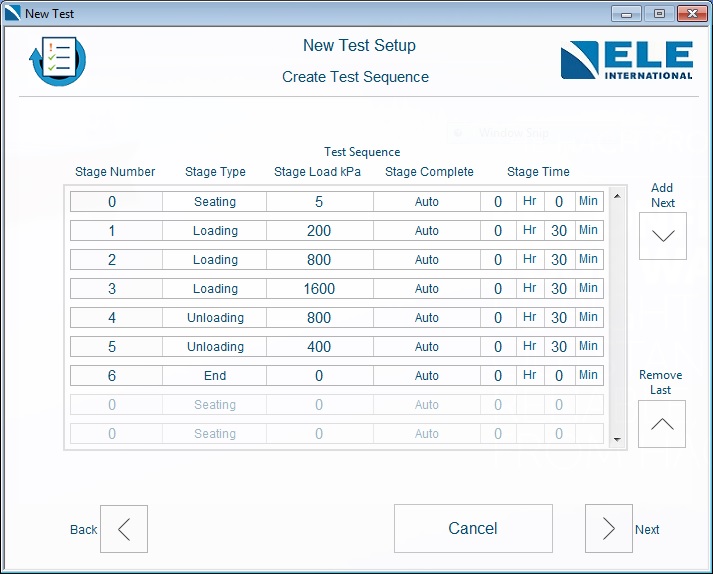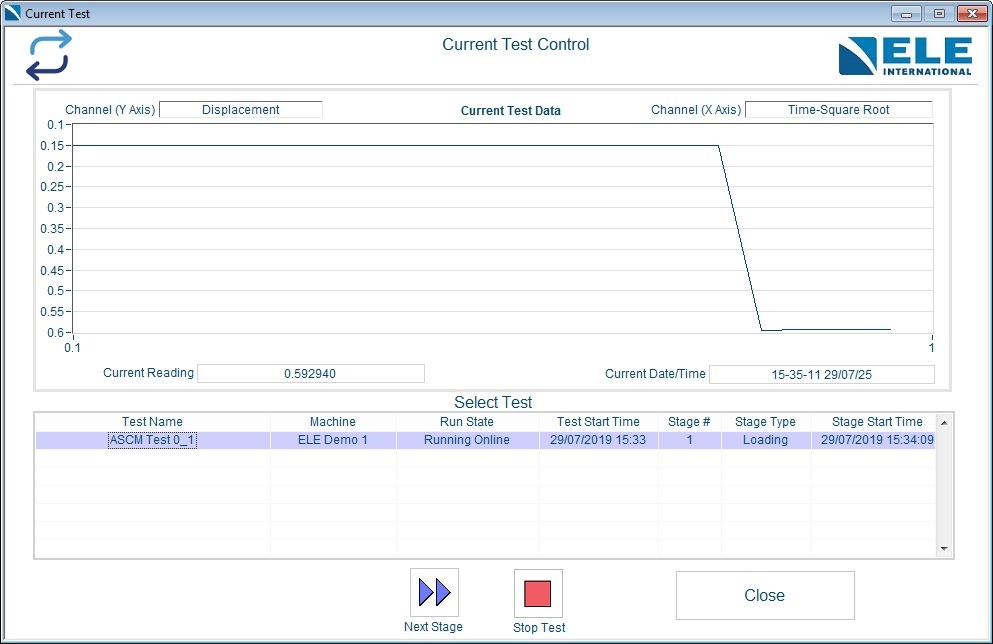|
ELE International’s Global Technical and Field Service Manager, Alfonso Rivera, explains how soil testing can be set up to run with the new AUTO Soils Consolidator (ASC). |
||||||
|
Compressible soils can be subject to long-term consolidation under the loads imposed by other layers, foundations and above ground structures so the one-dimensional consolidation (oedometer) test is vitally important for many construction projects. |
An ELE Auto Soils Consolidator
|
|||||
|
Tests are therefore carried out on specimens prepared from undisturbed samples as well as remoulded samples. Traditional methods involve manual changes to the loading of suspended weights, often four or five times, which involves a significant amount of laboratory time, particularly if the time for a change in load weight occurs when the lab is unattended – at night or weekends for example. |
||||||
|
The time taken for the completion of the test represents a significant cost for soil testing laboratories and can result in project delays. In addition to speed, automation of the test offers a number of significant advantages. For example pre-programmed international test methods can be applied automatically for every test, which significantly reduces the opportunity for human error. |
|
|
|
|
|
|
 |
Normally, a sample is prepared by using a knife to remove a section from an undisturbed soil core that is slightly thicker than the cutting ring, which is then inserted into the core to create the test sample with the soil protruding from the cutting ring on both sides.
|
|||||
|
This excess soil is then removed with the knife or spatula and the weight of the ring containing the sample is measured and recorded. The trimmings can be used for moisture content determination.
|
||||||
| On a fixed ring consolidation cell, a porous plate is placed in the bottom of the cell and the sample is placed in a locking ring on top of the porous plate, with a second porous plate on the top. The addition of a loading cap completes the sample assembly, which can then be aligned on the AUTO soils consoldator (ASC) with a centring stud. When a machine is initially set up and calibrated, the load point is set at a known distance above the cell. After every test, the load point automatically returns to this position to facilitate simple removal of consolidated samples and the accurate operation of successive tests.
|
||||||
| If the sample is to be saturated there is a pause for water to be added to the sample cell before the test continues. The test procedure is then configured on soil test management software, such as DS8. The software is menu-based and provides users with options to select pre-configured tests or to create customised load increment ratio (LIR) tests. Once the test is selected, the software takes the user through the set-up process in which data such as sample type, weight and dimensions are entered.
|
||||||
|
Detailed test stages are displayed for the entire test sequence, and operators are able to quickly and simply change the seating, loading and unloading stages if necessary. By clicking ‘next’ the user is provided with a screen, which summarises the test set-up, and if this is acceptable, the user clicks ‘start the test’. |
||||||
| Once the test is underway, DS8 displays its status. However, operators can select the ‘control test’ icon to view a graph of deformation either in real time, square root time or logarithmic time. In addition, the test stage, target load and displacement values are displayed on the instrument’s touchscreen. |  |
|||||
| The ASC recognises when each stage of the test is complete and automatically changes the load to commence the next stage. This saves a great deal of time, and frees lab staff for other work.
|
||||||
| The owners of manual oedometers will be pleased to learn that their equipment has not become redundant because each ASC also has the ability to run two manual oedometers. This is particularly important for teaching laboratories. In addition, with Ethernet connectivity, it is possible to manage up to 16 ASC machines simultaneously with DS8 software. This connectivity also enables users to monitor tests remotely 24/7, and provides an opportunity for remote service diagnostics.
|
||||||
| In summary, the consolidation testing of soils performs a vital role in protecting the future safety of built infrastructure, and by automating the test, the quality and reliability of testing is improved. But perhaps, most importantly, laboratories will be able to significantly increase the number and speed of tests that can be performed. This is good news for materials testing laboratories under pressure to lower costs and improve efficiency. | ||||||
******************************************
For more infomation, please contact:
Red Star Vietnam Co., Ltd.
Email: info@redstarvietnam.com